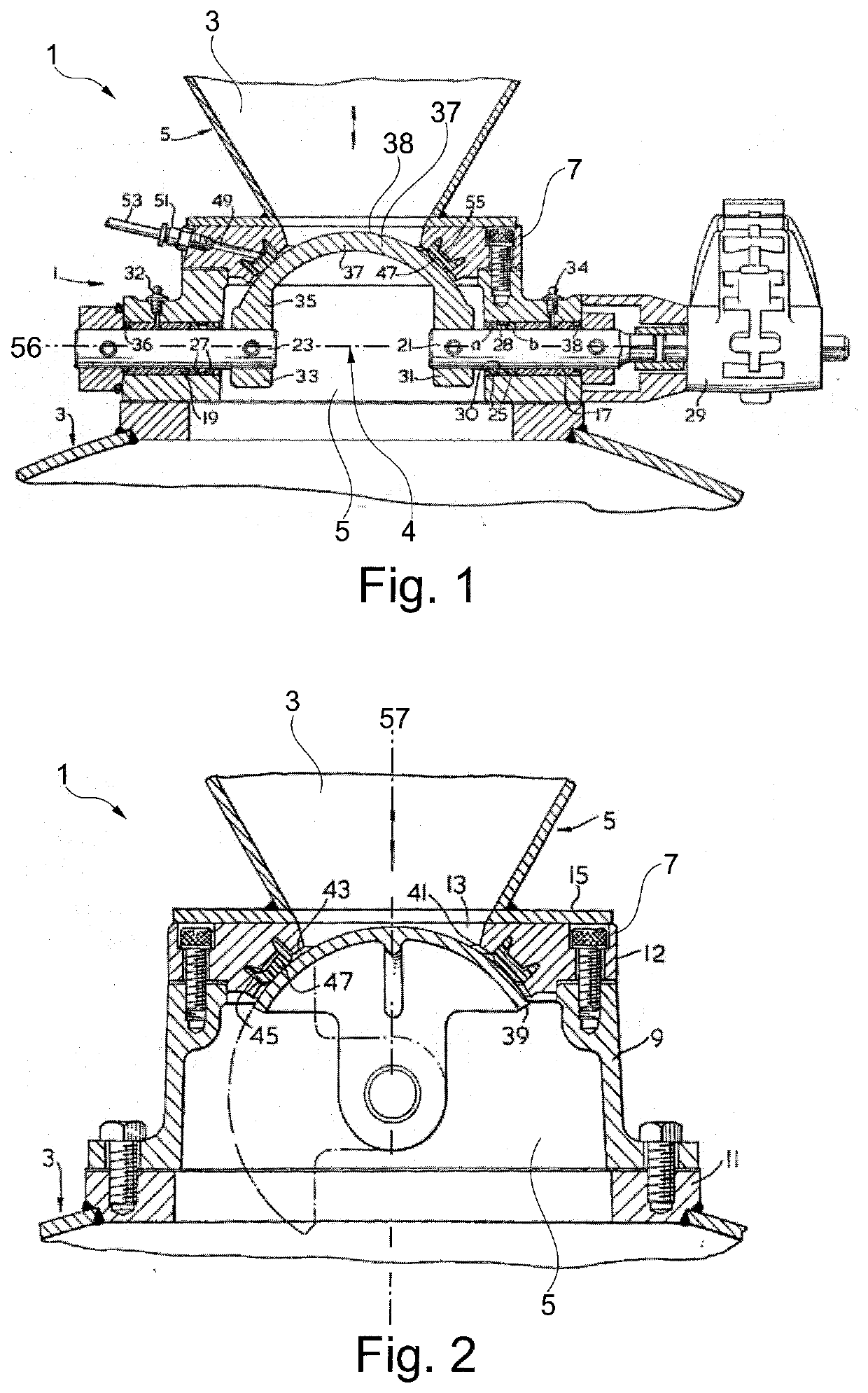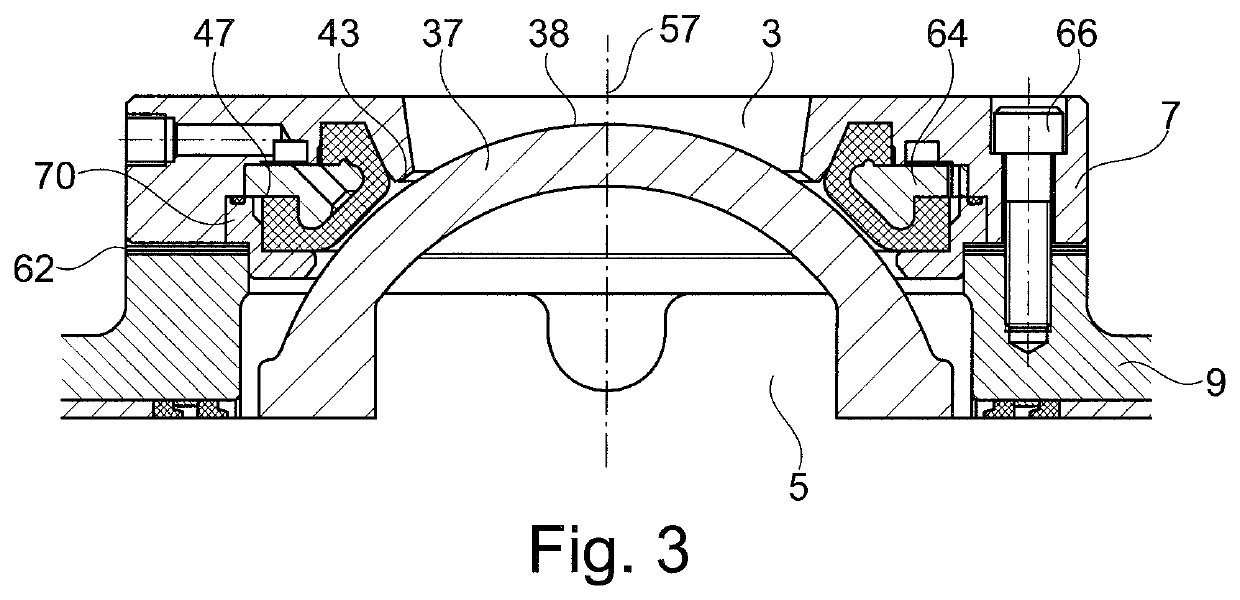Dome valve adjustable top plate
a top plate and valve technology, applied in the field of valves, can solve the problems of time-consuming and labor-intensive maintenance, unable to adjust the top plate, and unable to meet the needs of the user,
- Summary
- Abstract
- Description
- Claims
- Application Information
AI Technical Summary
Benefits of technology
Problems solved by technology
Method used
Image
Examples
Embodiment Construction
[0070]FIGS. 1, 2 and 3 show cross sections of a dome valve 1, having an inlet 3 and an outlet 5 defined by a body or housing 9, and an upper plate 7. In use, the outlet is typically at a lower pressure than the inlet. The inlet may for example be connected to a pressure vessel, and the outlet to a conveying pipeline.
[0071]Particulate material may be delivered using a flow of carrier gas, for example air, from the inlet 3 to the outlet 5, via a fluid passage indicated generally as 4.
[0072]In the embodiment shown, the body 9 is bolted at its outlet end to a flange 11 at the inlet to a conveying pipeline. Other connections may be used, such as a tri-clover fitting or the like. At its inlet end, the body 9 is similarly coupled to the outlet of a pressure vessel or hopper.
[0073]As seen best in FIG. 1, the valve 1 includes diametrically opposite disposed bearing arrangements 17 and 19 around a drive shaft 21 and a pivot shaft 23 respectively.
[0074]Drive shaft 21 extends outwardly beyond b...
PUM
 Login to View More
Login to View More Abstract
Description
Claims
Application Information
 Login to View More
Login to View More - R&D
- Intellectual Property
- Life Sciences
- Materials
- Tech Scout
- Unparalleled Data Quality
- Higher Quality Content
- 60% Fewer Hallucinations
Browse by: Latest US Patents, China's latest patents, Technical Efficacy Thesaurus, Application Domain, Technology Topic, Popular Technical Reports.
© 2025 PatSnap. All rights reserved.Legal|Privacy policy|Modern Slavery Act Transparency Statement|Sitemap|About US| Contact US: help@patsnap.com



